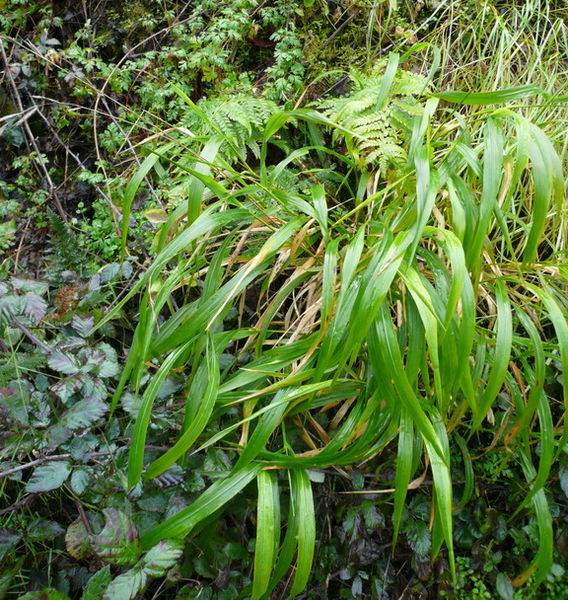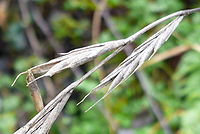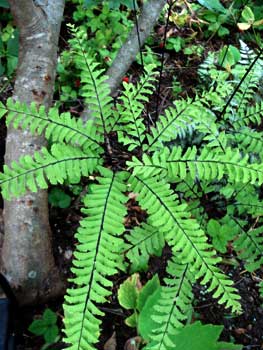Introduced species: False brome (Brachypodium sylvaticum)
Characteristics: Speaking generally, grasses are among the more difficult types of plant to identify; this one has enough unique features that a sharp eye can pick it out of a lineup, and is sufficiently pernicious to justify the effort. False brome is a perennial bunchgrass, typically growing 50 to 70cm (1½- 2 ft) tall. The leaf blade of the plant is a bright, “limey” green, flat, drooping, and up to 12 mm (1/2 in) wide with short hairs all over it (giving it a “fuzzy” feel and a kind of sheen) and a fringe of hairs surrounding the edge of the leaf. The stem is also hairy where the leaves are connected to it. Flowers come in narrow, pale-green spikelets, attached almost directly to the flowering stalk on very short pedicels (stems). False brome tends to last well into November and December, unlike most grasses in the Pacific Northwest. Watch for new patches of this plant especially after other grasses have started to turn brown (August to November or later).
Spread: False brome spreads by seeds, which may be moved about by wildlife and human activity. Though apparently not rhizomatous, clumps of false brome grow quite close together, forming monocultures. Native to North Africa and Eurasia, it has recently been reported as rapidly invading coniferous forest understories in western Oregon. While commonly found in forests, it may also grow in open areas. Seeds of false brome can be carried on shoes and vehicles, so special care should be taken to clean off after entering areas infested with this plant.
Control: Early control is critical for this species, which can spread rapidly in a variety of habitats. Manually dig up young plants before they set seed; cut off and bag any flowers to prevent seeding. Established stands will likely require several years of treatment; judicious fall application of appropriate herbicides can be effective on larger patches, particularly in combination with a summer mowing to remove flowers and prevent seeding. This is one of a handful of plants identified as a “mandatory eradication” species within the City of Portland; they can provide free assistance to citizens in identifying nuisance plants and methods to remove them. Contact the Bureau of Environmental Services Early Detection Rapid Response team at 503-823-2989 if you think you this species growing on your property.
Native Replacements: For shady, moist areas, maidenhair fern (Adiantum aleuticum) provides unique foliage with contrasting black stems; in open, sunny areas, consider a native grass species, such as Idaho fescue (Festuca idahoensis) or blue wildrye (Elymus glaucus, which will also take some shade) to replace false brome.



